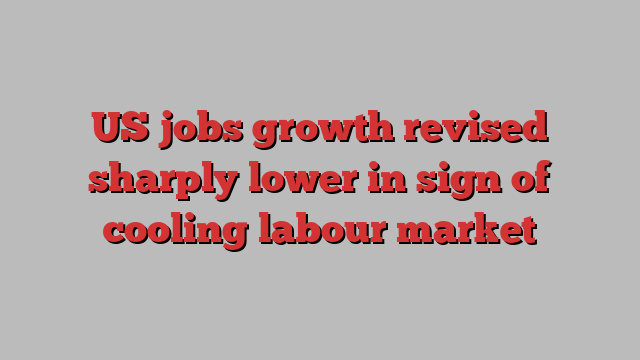
Unlock the Editor’s Digest for free
Roula Khalaf, Editor of the FT, selects her favourite stories in this weekly newsletter.
Jobs growth in the US economy was significantly weaker over the year to March than originally stated, according to fresh estimates released on Wednesday, compounding concerns about a slowing labour market.
The Bureau of Labor Statistics on Wednesday reported that the number of jobs added to the world’s largest economy in the 12 months to March was likely to be revised down by 818,000. BLS data had previously suggested US employers had added 2.9mn jobs during that 12-month period from April 2023 until March.
The revisions reported on Wednesday are preliminary and will be finalised early next year.
The initial market reaction to the announcement was muted, with stocks dipping but remaining in positive territory for the day. The two-year Treasury yield, which moves with interest rate expectations, was down 0.06 percentage points to 3.94 per cent.
The revised figure “was on the upper-end of the negative estimates that the market had heading into the event”, said Ian Lyngen, head of US interest rate strategy at BMO Capital Markets, “but it wasn’t anything paradigm-shifting.”
He noted that the same release last year initially showed 306,000 fewer jobs than first reported, only for that figure to be revised again to a decline of 187,000.
The revisions come at a tenuous time for the US economy. Consumers are still spending as price pressures have retreated from their recent decades-high peak, but weaknesses have started to crop up, fanning fears that a recession could be brewing if the Federal Reserve is not careful about its policy settings.
Interest rates have hovered at a 23-year high of 5.25-5 per cent for more than a year, becoming increasingly punishing to borrowers as inflation has trended back towards the central bank’s 2 per cent target. In light of this, officials have begun to set the stage for interest rate cuts, likely to be made at their next policy meeting in September.
The pace and depth of those cuts over the course of this year and next will be determined in large part by the health of the labour market, which officials have broadly characterised as slowing but not weak.
Monthly jobs growth has slowed and the unemployment rate has risen to 4.3 per cent. The increase in the unemployment rate is more than half a percentage point above the 12-month low, triggering a commonly watched recession indicator. Much of the rise in the unemployment rate can be attributed to a swelling labour force, economists, say, but nevertheless it has caused consternation.
Federal Reserve chair Jay Powell has said he does not need to see additional weakness in the labour market to feel confident that inflation is coming back towards the target as the central bank tries to avoid a recession and nail a “soft landing”.